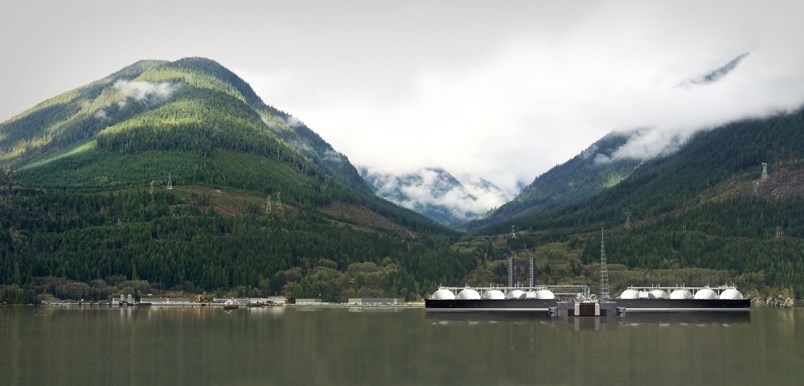The BC Energy Regulator (BCER) has issued a permit allowing FortisBC to discharge effluent into the environment for the Eagle Mountain to Woodfibre Pipeline project.
A permit issued by the BCER on March 25, 2024, authorizes FortisBC to discharge treated wastewater at the BC Rail and Woodfibre sites, the two sides of the natural gas pipeline tunnelling below the Squamish Estuary.
The permit approves three discharge points: two at the BC Rail site and one at the Woodfibre site. Each discharge site authorizes several types of activities and includes daily maximums, which FortisBC will have to measure and record.
Discharge that will be released into a storm sewer at the BC Rail site includes “contact water from precipitation, groundwater and water generated during the construction process including drilling, grouting and tunnel boring.”
Other discharge at the BC Rail site includes “non-treated water obtained for the purposes of conducting the hydrostatic pipeline test.”
On the Woodfibre LNG site, the discharge that will go into East Creek includes “contact water from precipitation, runoff,groundwater inflow within the bedrock tunnel and tunnel boring machine industrial water, including water for drilling, probing and cleaning equipment, and precipitation and runoff from the potential acid-generating rock temporary storage.”
The state of the water that is discharged has to comply with provincial guidelines.
“The effluent discharged from the wastewater treatment system at the point of compliance, shall not exceed the applicable British Columbia Approved and Working Water Quality Guidelines for Freshwater and Marine Aquatic Life, as published by the Ministry of Environment and Climate Change Strategy. Additionally, the effluent shall be free of other contaminants in concentrations that may have an adverse effect on the receiving environment,” reads the permit for all of the discharge sites.
“The effluent shall not be discharged in a manner or quantity that impairs the proper ecological function or otherwise causes excessive erosion of the receiving environment into which the discharge of water is conveyed.”
The permit requires FortisBC to take several measurements, including before, during, and after discharge. The permit notes that discharge must be immediately stopped if it exceeds daily maximums or has perceived adverse environmental effects.
FortisBC will also be required to submit weekly reports to the BCER about the sampling and monitoring program, though the frequency of these reports may decrease if the company shows a history of compliance and gets written notice from the BCER. Moreover, a copy of the reports will be supplied to each First Nation, such as Sḵwx̱wú7mesh Úxwumixw (Squamish Nation), in consultation on the project and posted publicly on FortisBC’s website.
View the permit in full on the BCER’s website.




